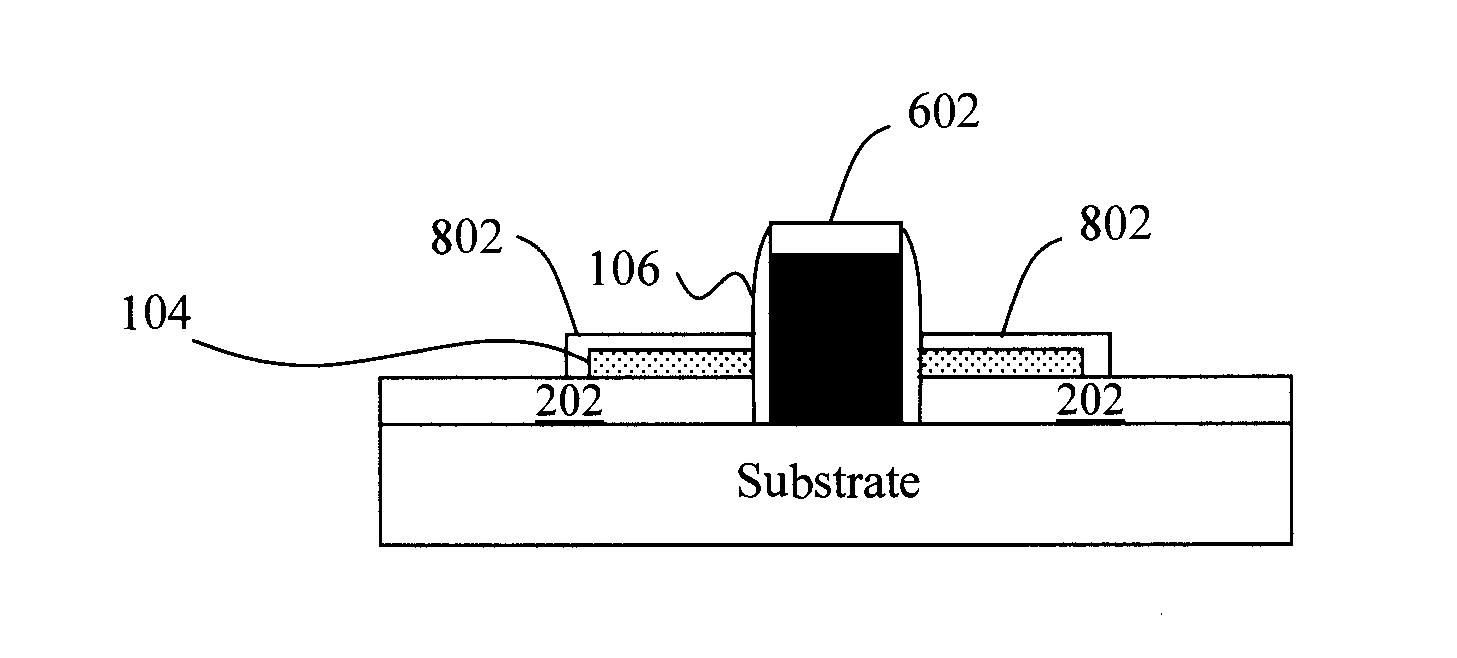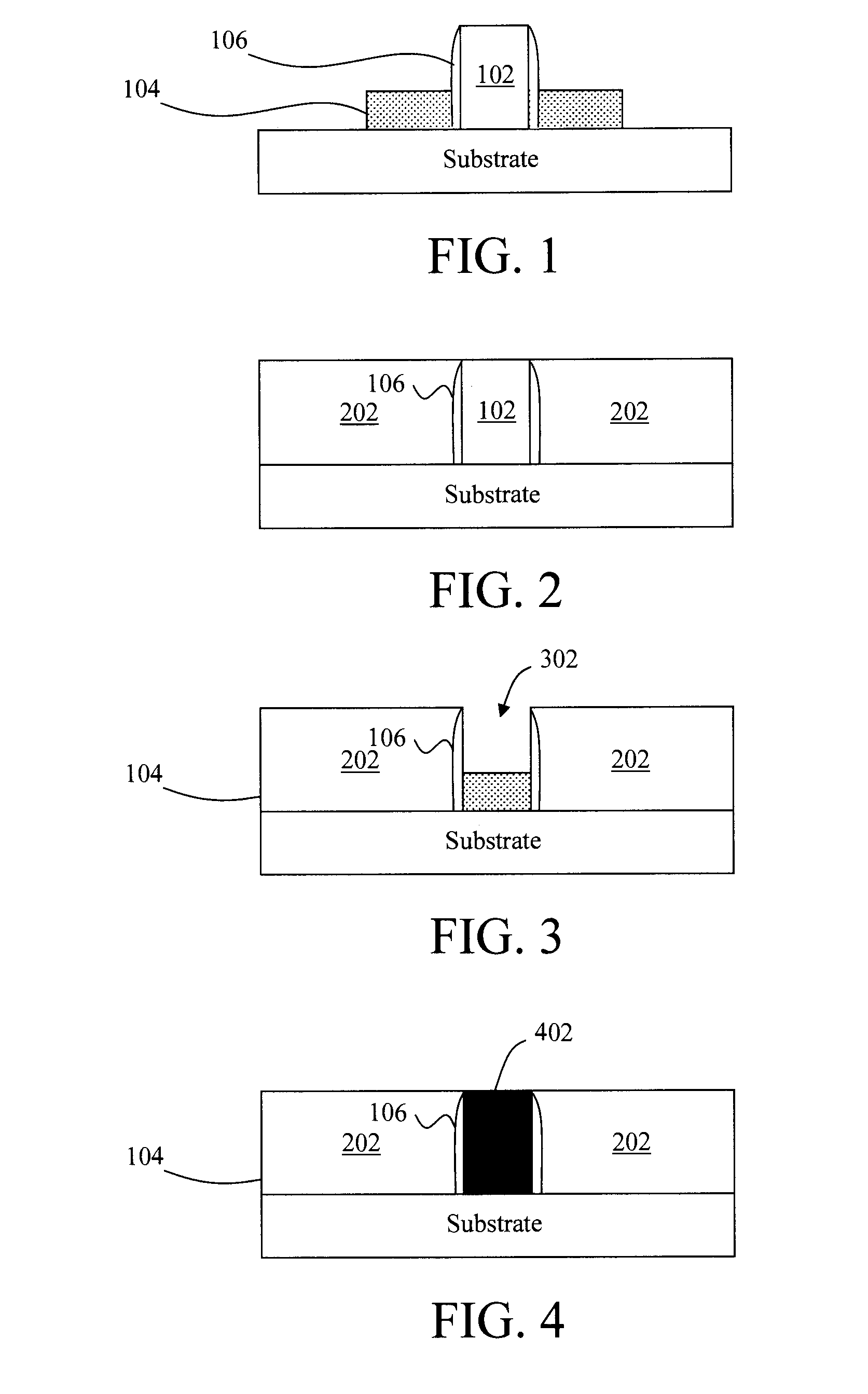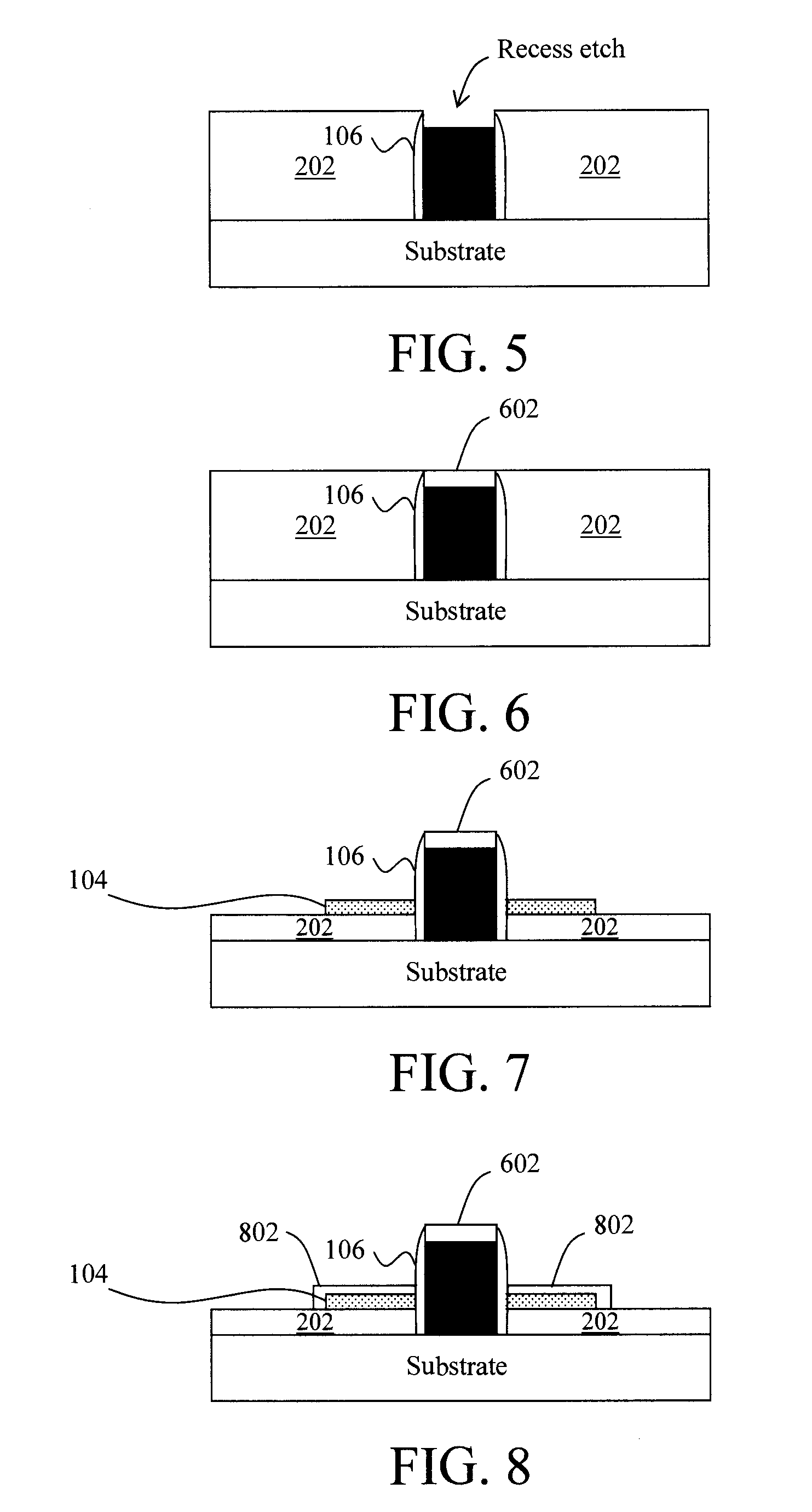Low Temperature Salicide for Replacement Gate Nanowires
- Summary
- Abstract
- Description
- Claims
- Application Information
AI Technical Summary
Benefits of technology
Problems solved by technology
Method used
Image
Examples
Embodiment Construction
[0028]Provided herein are techniques that enable the use of a low temperature salicide in a replacement gate process flow. The term “low temperature salicide” as used herein refers to a self-aligned silicide (i.e., a salicide) that would be degraded by exposure to the high temperatures encountered with the replacement gate process during the final gate anneal. As will be described in detail below, the present process involves de-layering the gap-fill dielectric after the replacement gate formation, which permits the low temperature salicide to be formed after the replacement gate anneal.
[0029]An overview of the present techniques is first provided by way of reference to FIGS. 1-8, followed by an exemplary implementation in the context of a fin first, wire last, gate-all-around (GAA) device shown illustrated in FIGS. 9-19. The present techniques are generally applicable to any replacement gate device fabrication process, including but not limited to, FinFET, nanowire and planar devic...
PUM
 Login to view more
Login to view more Abstract
Description
Claims
Application Information
 Login to view more
Login to view more - R&D Engineer
- R&D Manager
- IP Professional
- Industry Leading Data Capabilities
- Powerful AI technology
- Patent DNA Extraction
Browse by: Latest US Patents, China's latest patents, Technical Efficacy Thesaurus, Application Domain, Technology Topic.
© 2024 PatSnap. All rights reserved.Legal|Privacy policy|Modern Slavery Act Transparency Statement|Sitemap



